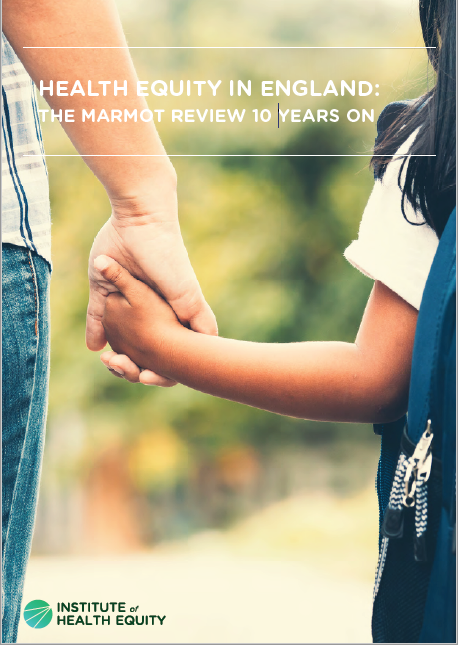
Coventry Marmot City Evaluation 2020
Coventry is proud to be a Marmot City.
The Marmot Partnership continues to bring together key stakeholders from across the system to provide an ongoing strategic focus on health inequalities. In 2023, the partnership produced the Marmot Monitoring tool to describe the city-wide programmes of work aligned to the Marmot principles, delivered by partner organisations across Coventry to tackle health inequalities. The tool contains information on the programmes of work and interventions delivered by partners that support our residents and businesses, building back fairer.
In 2022 Coventry City Council was awarded funding in the first wave of the national a NIHR Health Determinants Research Collaboration (HDRC) Programme. The Coventry Health Determinants Research Collaboration includes the University of Warwick, Coventry University, Institute of Health Equity, University Hospital Coventry, and Warwickshire, the voluntary, community and social enterprise sector, and local communities. The research builds on Coventry’s track record of cross-sector engagement to support the council and partners including the Marmot Partnership to better use the evidence base around the wider determinants of health develop a new collaborative research culture and capability in the city.
See also the January 2024 Guardian article on Coventry’s journey on how becoming a ‘Marmot city’ has underpinned their services, helping the council improve health equity.
...
Coventry is a city with significant inequalities in health and healthy life expectancy between the most and least deprived areas of the city. In 2010-12, inequality in male life expectancy at birth was 11.2 years between the highest and lowest income deciles whilst, using the same data, inequality in female life expectancy at birth was 8.4 years. Publication of the Marmot Review was followed by the Health and Social Care Act in 2012, which legislated for the move of public health functions in England from the NHS to local government. In 2013, being aware of local inequalities, and as it took on its new public health duties, Coventry City Council decided to adopt the title of Marmot City and sought to apply local powers of the Council and partner organisations to pursuing the Marmot policy objectives.
This report provides an independent evaluation of the six years that Coventry has been a Marmot City. It was conducted by a Specialist Public Health Registrar with advice and input from Coventry City Council and University College London’s Institute of Health Equity. The evaluation also made use of Public Health England’s (PHE) Health and Wellbeing team’s knowledge and resources in the early stages when a memorandum of understanding was agreed between PHE, Coventry and UCL.
This report examines how Coventry has applied the Marmot Review recommendations. It seeks to inform future developments in Coventry and provide information and insight for other areas. It draws on interviews with senior 3 stakeholders, analysis of numerous strategies, evaluations and other local documents, and data based on indicators agreed by the organisations that have overseen this evaluation.
The six policy objectives recommended in the Marmot Review to reduce the social gradient in health are often referred to as the ‘Marmot Principles’ and include:
• Give every child the best start in life
• Enable all children, young people and adults to maximise their capabilities and have control over their lives
• Create fair employment and good work for all
• Ensure a healthy standard of living for all
• Create and develop healthy and sustainable places and communities
• Strengthen the role and impact of ill-health prevention
The overarching approach to delivery recommended across all these policy areas is proportionate universalism, the idea that services should be provided universally but with a scale and intensity that is proportionate to the level of disadvantage.
View the 2019 Director of Public Health Annual Report focusing on ‘Bridging the Health Gap'.
Read about our partnerships with other regional groups in the UK and our #BuildBackFairer work:




